#nvent
Explore tagged Tumblr posts
Text
I let out

It feels
Obviously disgusting,
VIVIDLY BLOOMING

HYSTERIC!
Horribly NICE
THE POLLENS COME OUT,

it feels so DEATHLY LIVING,
I AM WITH THE POLLENS

These roots goes everywhere to little DIRTY FILTHY CRACKS
To beautifully DULL AND GREY sunshine,
The pollens, they smell so..

SO SWEETLY ROTTEN,
THEY TASTE OF HORRIDLY COMFORTING,
DELUSIONALLY UNCOMFORTING,
THEY TASTE OF FLESH, AND OF
BUT I AM NOT PART
I REFUSE
ITS SO AGONIZING TRUTH,
THE LIES WERE SO-
THE SURFACE,
I cant feel my face
#Vent#SWEET#SWEEET#VEENT#VEEEENT#VEEENT#VENT#NVENT#VRNT#VTEN#VNTE#TENV#ROTTING#zenoflee#zenoflee's ROT#HE Not pollen#please#Hug#zenoflee's art
5 notes
·
View notes
Text
Finance Internship - Summer 2025
We’re looking for people who put their innovation to work to advance our success – and their own. Join an organization that ensures a more secure world through connecting and protecting our customers with inventive electrical solutions.Early Careers at nVentInnovation, inclusion, and growth.By joining nVent, you can help build a more sustainable and electrified world, to be celebrated for…
0 notes
Text

We are electrical industrial equipment Distribution Company and leading provider of Switchgear, circuit protection system, cables, Enclosure The industry of Machinery and manufacturers, contracting and Panel Building are the best associations of Electro care. Global renowned brands such as, Schneider, Lapp, nVent, KEI, Selec, SAFEON, APC By Schneider and Kirloskar Motor.
To know more about Us:
#electrocare #channelpartners#SchneiderElectric#AuthorizedDistributor#electricalequipment#electricaldistributor #apcbyschneiderelectric
#kirloskarmotor#WiresAndCables#kei#lapp#selec#nVent
#schneider electric#kei cable#lappcable#schneider#electrocare#wires and cables#channel partner#electricalequipment#online ups#enclosure#nvent
0 notes
Text
1 note
·
View note
Text
nventing a new type of fic thats not a fix-it or a break-it but some awful combination of both
34 notes
·
View notes
Text
The gods of Gaul: The bloodthirsty triad
While Cernunnos, "the horned god", is the most iconic of the Gallic gods (hence why I made a post about him already), there are other famous male deities one need to tackle when entering the mythology of Gaul... Those I call the "bloodthirsty triad": Teutates, Taranis and Esus.
These three gods gained their association and their celebrity through Lucan's poem "Pharsalia", which described the trio as the main gods of Gaul. Not just that: Lucan also described them as bloodthirsty and cruel gods, "worse than the Diana of Taurid" (an incarnation of Artemis renowned for demanding human sacrifices). Scholia and ulterior Roman texts lists the various ways each one demanded human sacrifices to be offered to him. Teutates asked for people to be drowned for him ; Taranis to have people beheaded (though by the time of the Romans human heads had been replaced by cattle heads apparently) or burned alive (cue to the "wicker man" legend) and Esus to have people hanged from tree - but not to be strangled, rather to bleed to death from branches... For the Romans of the time, these three deities were the core of the Gallic religion and they had a worship focused on human sacrifices.
Of course, this is where the debate first begins. There are some who consider that the Romans were writing down the truth and that these texts were proof of human sacrifices in Gaul. There are others who completely reject it as pure anti-Gaul propaganda and the Romans nventing "barbarian" rituals to demonize their enemy tribes. There is a third side yet who thinks that there is a grain of truth, some historical foundations for these claims, but that it was heavily distorted and caricatured for literary purpose. So... Did these gods really asked for human blood?
The truth is we cannot say. If you read my introduction to the Gods of Gaul, you will know what I am talking about. With the Gallic gods, we can never be sure of anything, due to how the Romans reinterpreted/misunderstood/omitted a lot of things in their records, and how the Gallic people themselves left no complete or deep traces beind, only fragments we can just make theories and guesses about.
[Also, I don't think I need to remind you this, but I am not a reliable source, just a guy on the Internet collecting info and sharing stuff.]
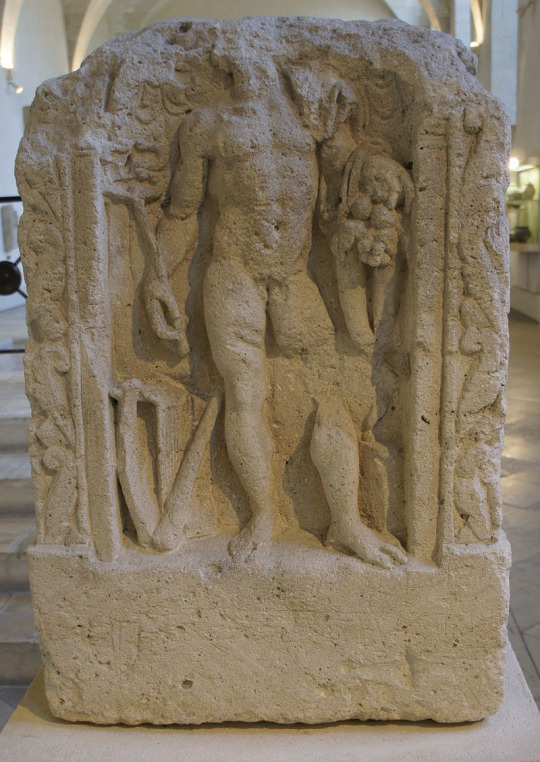
(A depiction of either Teutates or Taranis)
The first of these deities we shall explore is: Teutates! Also known as Toutatis - a Gallo-Roman spelling that was made very popular thanks to its use in the Astérix franchise (By Toutatis!).
What we know for sure: Teutates' very name can be roughly translated as "father of the tribe/the nation/the people" (others argue it might rather mean "father of all", like the "All-Father" of Odin). It is commonly considered and agreed that Teutates was the "tribal god" of Gaul, found in almost every Gallic tribe at the time, he was a "unifying deity" present in all the different sub-groups of Gaul. Some see him, as such, as the legendary ancestor of the Gallic people and the original lawmaker and arbitrator of Gallic society (his name was used in various oaths). The Romans strongly associated him with the god Mars, saying that the Gauls believed battles depended on his will. This leads to people seeing him as a war-god: for some he was the defenser of the tribe during the war or the protector of the Gallic warriors (later of the Gallic men serving in the Roman army). For others, he was a dual god who acted as the guardian of the territory in time of peace and became a warrior-god in times of conflict (they point out that his "warrior-self" seems to appear on the Mavilly pillar). It is thought that the corpse of the slain enemies were offered to him after the war.
What we don't know however is... whether Teutates was "one" or "many". There are currently two factions in the studies of Gallic religion. One side argues that Teutates was a singular, unique deity, a god in his own right - was the "patron" deity of Gaul, the "lord-god" of the pantheon, one same god with a cult in every tribe, the "unifying" deity... But others argue that Teutates' omnipresence in a divided Gaul, and the fact the Romans seemingly assimilated him with various deities (he has been syncretized with both Mars and Mercury, with sometimes Apollo throw in), are proof that there are "many" Teutates. As in "teutates" is not a proper name, but a title or qualificative worn by the local deity or the god of the tribe - there are as many "teutates" as there are Gallic communities. Due to this fracture, an entity such as the Gallo-Roman "Mars Toutati" can be interpreted in one of two ways. Either Mars was added "Toutati" because the Gauls identified the Roman Mars with their god Teutates ; either Mars was given the title "Toutati" to designate the god Mars as the "god of the nation" and their new "national patron".
Some depictions present him as linked or manifesting through a boar ; we also have Gallo-Roman depictions presenting him as a Roman soldier with the mythical ram-headed snake, and a female warrior uncovering her left breast, by his side (it is the famous Mavilly pillar I talked about previously). Some argue that his association with Mercury, despite seemingly be a war-oriented god, reflected how in the Gallic thought eloquence, speech-making, persuasion were talents needed by the war-leaders to command their warriors and elaborate strategies: thus, war-chiefs had to invoke him before battle so he could "inspire" them to rally their troops and ignite their hearts with his words, resulting in the Romans perceiving the god as a Mercury-Mars hybrid (this also made some people link Teutates to Ogmios). About the "human sacrifices" attributed to him... Teutates' "victims" were not drowned anywhere, but in a vat/barrel in which they were plunged "headfirst" and maintained until asphixiation. Such a scene was thought to be depicted on the Gundestrup cauldron where a figure (identified as Teutates) plunges men into a vat... Though this "ritual drowning" has been identified with perhaps blessing rituals to confer immortality (a motif common in many mythologies, including the Greek one - see Medea's cauldron trick), implying that the "vat of Teutates" could be a deadly bath as much as a life-ritual (we find back here the "life and death" duality of Celtic deities such as the Dagda). Others have rather linked the use of a vat to this motif found in other Celtic mythologies of freezing baths being used to calm down the literal burning frenzy and boiling rage of extraordinary heroes after a battle.
Inscriptions also link him to a local Gallic god called "Meduris" or "Medros" that people link to the Irish "Mider" - also thought to be a war-god, and possibly another "syncretized" or "alternate" self of Teutates if we understand "teutates" as a title or qualificative (Toutates Meduris, like there's a Mars Toutates)
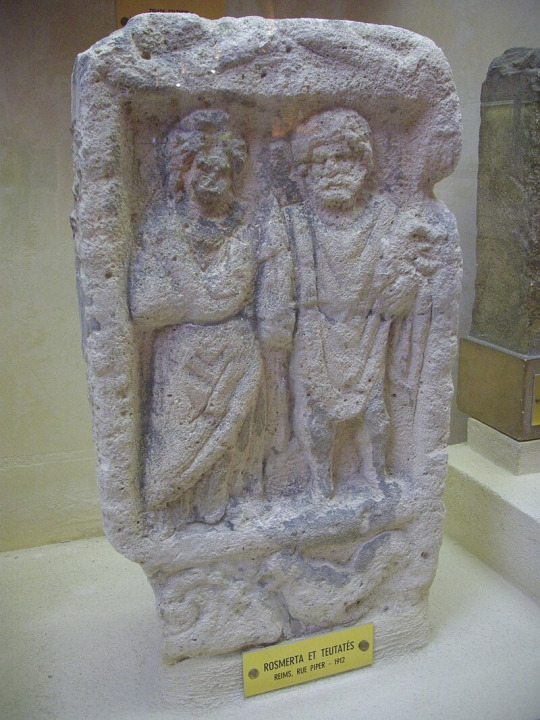
(A depiction of Rosmerta and Teutates together - as I said in my previous posts, some argued Teutates as the "Roman Mercury" was the same character as Cernunnos)
We know more about the god Taranis.
Taranis is accepted as a storm-god, notably due to his name being etymologically linked to various Celtic words for "thunder" (taran, torann, toirneach) - and the same European root from which the name "Thor" comes from. This is primarily why Taranis (or "Taranos") was syncretized with Jupiter - as the master of the sky and wielder of lightning (and possibly bringer of rain). Interestingly, while usually Taranis is explicitely identified as Jupiter (Jupiter Taranucus), there are some rare records where Jupiter is identified as the "son of Taranus". And things get even less clear when you realize that sometimes Taranis is identified with... Dis Pater (the Roman god associated with Hades/Pluto). Quite a strange decision for a god that seems to be clearly a sky-god/thunder-god, but it seems that every time the Romans associated Taranis with Dis Pater, it was to highlight his "cruel-self", especially the aspect of the deity asking for men to be burned alive for him (the beheading was rather identified as linked to the Jupiter-Taranis). When pointing out that Taranis was Jupiter, Roman authors also insisted on how it was because both were "supreme masters of the battle" - implying that Taranis had a "war god" aspect. As a result he might have been a battle deity just like Teutates (though it is no surprise as it seems most of the male gods of Gaul are linked to war, the same way all Gallic goddesses are about a form of fertility).
Taranis inherited a lot of Jupiter's iconography, since the Gallic gods only received extensive depictions by the Roman times. As such we have a middle-aged, bearded Taranis holding a lightning or a scepter, sometimes a mace (more about this later), sometimes with an eagle by his side... However the "Gallic Jupiter" or the "Roman Taranis" have some unique features clearly Gallic of origin. For example the presence of a horse or a snake by his side (the horse has been variously interpreted as a thunder-animal or a war symbol). Or the presence of an "anguipede" (snake-tailed) character by the side of Taranis, sometimes pulling his chariot (there are MANY theories about what these snake-tailed guys hanging by Taranis/Gaulish Jupiter's side are).
The symbol that however truly separates Taranis from Jupiter is the wheel. It is to the point that those that doubt Taranis' name prefer to call him "the god with the wheel". Taranis is always seen holding a wheel. For some the wheel depicts the "cosmic wheel" that moves the stars in the sky, around the polar axis ; for others it is a solar wheel, that Taranis would hold as a master of the sky... It is however more commonly believed that this is a symbol of thunder - the wheel being the wheel of the "chariot roaring through the sky" when storms happen (see Thor's chariot). Mind you, as Daniel Gricourt pointed out, the wheel could symbolize BOTH the lightning AND the Sun, the two manifestations of the "celestial fire". Similarly the spiral is a recurring element of Taranis' symbolism, and it is well agreed that the spiral is a sign for "lightning".
The wheel as Taranis' emblem made some people compare the god to the Dagda (also holding a mace, like Taranis sometimes), who had as one of his "avatars" the druid Mog Ruith, "Servant of the Wheel" - a wheel which blinds those that see it, deafens those that hear it, and kills whoever is touched by it. Another possible tie to the Dagda would be a component of male sexuality - some argued that Taranis' titles such as "boussourigios" implied a sexually active and accomplished god (like most thunder gods of Indo-European cultures, from Zeus to Indra) and that the mace he held could be a phallic symbol... But it might be a bit of a stretch since we have no actual proof that Taranis had sexual components to his myth.

(A statuette of Taranis)
Third and final: Esus. The most mysterious of the three... Taranis is pretty well-rounded up and defined. Teutates is a bit more unclear, but at least we get his rough deal, his vague business. But Esus? He is a very confusing deity...
Esus (also called Hesus, Esos, Aesus) is most famous for his clear iconography: a man working with a tree. On the Pillar of the Nautes, Esus appears striking a tree or cutting its branches with some sort of billhook. This reflects an engraving found in Trèves where he cuts down a tree with what seems to be an axe. (Sometimes these trees are identified as willows) This led people to describe Esus as a "woodsman" god, a "lumberjack" deity - some even making him a tree-god, forest-god or earth-god. However this picture doesn't explicitely make him a "forest god"... Indeed, these images of Esus cutting a tree are ALWAYS coexisting with a picture of the famous "Taruos Triganarus", the bull with three cranes on his back. This mythical animal is well-established as a legendary symbol of Gaul linked to the divine (like the ram-headed snake), however nobody knows exactly WHAT its deal is. Is the animal a companion of Esus? Or is Esus trying to reach, perhaps kill the bull? Indeed, many pointed out the tree seems to "shield" or "cover" the bull (sometimes the bull seems to be INTO the branches of the tree)... Everybody agrees that this recurring image is the reflexion of a legendary episode that is today entirely lost. There's a tale there that was not recorded - many have tried to recreate it, with various results...
[Anne Ross, in her article "Esus et les trois grues", used comparisons with Irish-Celtic mythology and other Celtic folktales to prove that this episode was likely of a solar nature and that the three birds likely depicted transformed goddesses. Paul-Marie Duval, in the article "Esus et ses outils sur des bas-reliefs" pointed out the difference between his two famous depictions - in one he cuts the branches, in the other the trunk of the tree - to prove that the core idea of the myth is that the god is simply "cutting down" the forest in an attempt to find back the animals "lost" in the woods]
So if we cannot know things out of this picture, what else can we find about Esus? We know that his name appeared in a recurring way in Gallic proper names: "Esugenus" (son of Esus), "Esunertus" (he who has the strength of Esus), "Esumagius" (powerful like Esus)... All these names implies Esus was some sort of "strongman" of the gods. Some argue that Esus comes from the etymological root "veso" (the best, the better, the good one) - and they can push it further by comparing it to the Dagda ("the very good"). Others rather defend that Hesus is etymologically linked to "herus", "lord" or "master", which led some to believe Hesus was just an alternate name or identity for "Teutates" - the two being one entity that the Romans thought were two. This latter theory is reinforced by the strange syncretism confusion between the two...
Indeed, Teutates has been identified as both Mars and Mercury... And Esus has been identified as both Mars and Mercury. In the Roman sources where Teutates is translated as "Mars", Esus is identified as "Mercury" because his worship was apparently common among merchants. However, when the Roman sources identify Teutates with "Mercury" they claim Esus was the Gallic name of "Mars"... (Things are further complicated by how on the Trèves depiction, Esus is depicted alongside the Gaulish Mercury - Gaulish because he wears a torc and has Rosmerta by his side). As a result, some people argued that Esus was the actual "Gaulish Mars" or Gallic war-god, the one causing battles, bringing rage in combat, the one to which the Gallic warriors dedicated their slain victim during or after the war - instead of Teutates. But other argues it is not the case - and as I said above, it seems that ALL the main male gods of Gaul were linked to war in one way or another, so things cannot be clear-cut.
However, one thing that CAN be said is that Esus is definitively tied to trees. Outside of his "woodsman cutting down a tree" iconography, there was the strong Roman belief that Esus' human sacrifices were performed by having people hanged from trees... Not hanged as in "strangled with a rope", but hanged and then dying from "losing all of their blood". The descriptions of these sacrifices has fascinated scholars, since the Romans described a hanging and then a bleeding without talking at any points of a wounding... But it is safely assumed that Esus "sacrifices" were done by tying someone to a tree and bleeding them out. Some defend the idea it reflects the role of Esus as a god of vegetal fertility, since such a ritual would lead to the victim's blood pouring onto the tree's roots and thus "feeding" the tree; they compare it to various "hanging and stabbing" rituals found in cultures to ensure the harvest. Others compare it to the myth of Odin hanging on a tree while stabbed for nine days and nine nights. Other similar deaths have been pointed out: Lleu Llaw Gyffes in Welsh legends, or the Christian martyrdom of saint Marcel of Chalon.
Many people have tried to find a character in ulterior "Celtic" fiction tied to Esus. Some proposed that by linguistic transformations Esus' name ended up as the "Owain" of Ireland and the "Yvain" of France. Others defended the idea that Esus had correspondances with Cuchulainn.
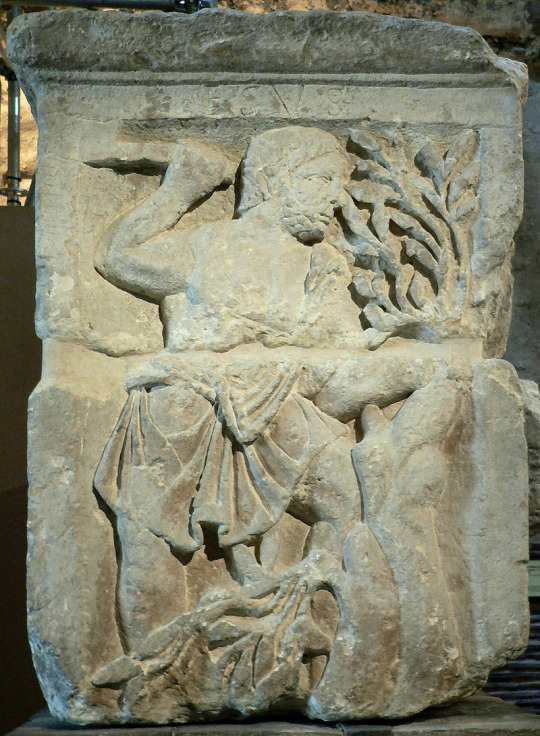
(Esus as he appears on the Nautes pillar)
Outside of all what I said above, there are also various theories, reconstructions and so-called "claims" that have been going around... But which I doubt highly due to them not having reliable sources, solid proof, and sometimes common off a bit from nowhere - giving off the feeling of being VERY imaginative reconstructions... I'll still list them below (after all many of them are based on comparative mythology, Indo-European archetypes or comparisons with other Celtic myths, so maybe there's some truth in there) but I want to keep them separate:
Some people consider that Teutates was likely the "judge after death" in the Gallic thought of the afterlife: they believe that when a person from Gaul died, they presented themselves in front of Teutates who judged if they were worthy. Worthy of what? Well, for some of an idyllic afterlife/otherworld of endless summer and bountiful orchards - yes, openly identified and linked with Avallon. For others, worthy of a reincarnation. [However to my knowledge there are no actual sources linking Teutates to the afterlife, Avalon, reincarnation or any "cosmic jugement"]
Some people "reconstructed" a myth opposing Taranis and Esus as a sky-god and earth-god, supposedly fighting for the love/ownership/marriage with the Mother-Goddess (imagined to have been Taranis' wife at first, then to have left him for Esus', and Taranis' revenge being tied to the episode of the "bull with the three cranes").
Some people believe that Esus and Cernunnos were one and the same, the two faces of the "earth god". Supposedly, Esus was the more "human" face of the god corresponding to springtime, to the blooming vegetation of the "surface", while Cernunnos was his more "monstrous" face, corresponding to the winter and to the nature retreating "underground", in the underworld over which Cernunnos ruled.
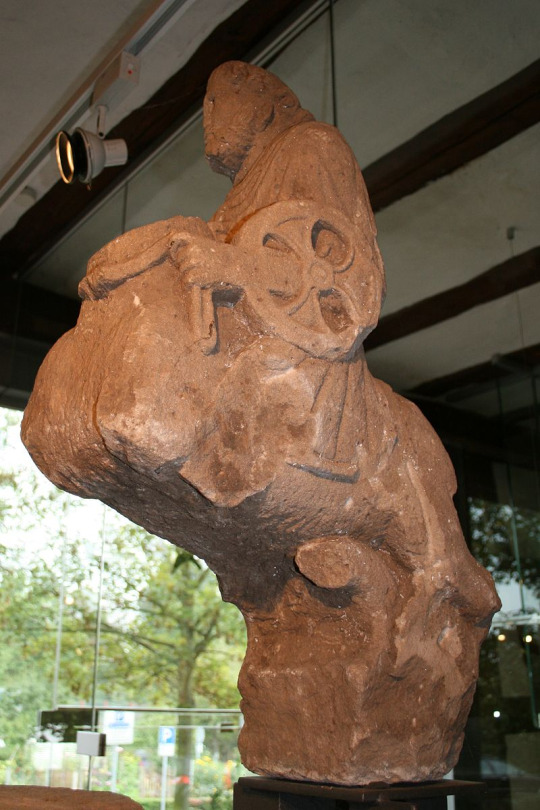
(A Roman sculpture of Jupiter-Taranis)
#the gods of gaul#gallic mythology#ancient gaul#taranis#teutates#esus#gaulish gods#gaulish mythology#gods of gaul
16 notes
·
View notes
Text
they should nvent a way 2 rest that m8kes u less tired
11 notes
·
View notes
Text
zaza went hard this day i nvented a new ship


Alejandro and Mikan (AleMikan)
(TD and Danganronpa parallel universes canon??!?!)
#td alejandro#mikan tsumiki#danganronpa#total drama#if theres an aletzuyu then it can be an alemikan tho#alemikan
5 notes
·
View notes
Text
thy need toi nvent a pill that makes me want to get out of bed
22 notes
·
View notes
Text
Acrostic Poem
by: Adrian G. Pelen
A - ware just like a sleeping owl
D - reaming like a crowned king
R - eality is slowly fading away
I - nventing my own world
A - s soon I fall asleep
N - ot until someone wakes me up

5 notes
·
View notes
Text

nVent HOFFMAN Enclosure Solutions for every need. Make fast customizations, increase user convenience, simplify installation, promote electrical safety, and more.
www.balajiswitchgears.com
Mail: [email protected]
2 notes
·
View notes
Text
𝗨𝗻𝗹𝗼𝗰𝗸 𝘁𝗵𝗲 𝗙𝘂𝘁𝘂𝗿𝗲 𝗼𝗳 𝗗𝗮𝘁𝗮 𝗖𝗲𝗻𝘁𝗲𝗿 𝗥𝗮𝗰𝗸 𝗦𝗲𝗿𝘃𝗲𝗿𝘀 IndustryARC™
The Data Center Rack Server Market size is projected to reach US$52.8 billion by 2027, growing at a CAGR of 12.5% from 2022 to 2027.
𝐃𝐨𝐰𝐧𝐥𝐨𝐚𝐝 𝐑𝐞𝐩𝐨𝐫𝐭 𝐒𝐚𝐦𝐩𝐥𝐞: https://lnkd.in/gR-EpqtU
𝐊𝐞𝐲 𝐓𝐫𝐞𝐧𝐝𝐬:
𝗔𝗜 & 𝗖𝗹𝗼𝘂𝗱 𝗔𝗱𝗼𝗽𝘁𝗶𝗼𝗻 𝗗𝗿𝗶𝘃𝗲 𝗜𝗻𝗻𝗼𝘃𝗮𝘁𝗶𝗼𝗻 🤖☁️ The surge in AI, cloud computing, and #bigdata is compelling #organizations to upgrade their data centers with high-density rack server solutions. These systems are designed to handle massive processing loads, ensuring rapid data access and efficient computing—vital for #businesses transitioning to digital-first operations.
𝗔𝗱𝘃𝗮𝗻𝗰𝗲𝗱 𝗖𝗼𝗼𝗹𝗶𝗻𝗴 & 𝗜𝗻𝗳𝗿𝗮𝘀𝘁𝗿𝘂𝗰𝘁𝘂𝗿𝗲 𝗜𝗻𝘁𝗲𝗴𝗿𝗮𝘁𝗶𝗼𝗻 ❄️🔧 As server density increases, so does the need for innovative #cooling solutions. Modern data center racks now incorporate advanced cooling #technologies like liquid cooling and optimized airflow designs, which enhance performance, reduce downtime, and #extend equipment lifespan in high-demand environments.
𝗙𝗼𝗰𝘂𝘀 𝗼𝗻 𝗘𝗻𝗲𝗿𝗴𝘆 𝗘𝗳𝗳𝗶𝗰𝗶𝗲𝗻𝗰𝘆 & 𝗦𝘂𝘀𝘁𝗮𝗶𝗻𝗮𝗯𝗶𝗹𝗶𝘁𝘆 🌱⚡ Energy efficiency is becoming a major priority for data #centers. Companies are investing in sustainable infrastructure and energy-efficient rack designs to #minimize their environmental impact while managing operational costs. This trend not only meets regulatory #demands but also supports long-term growth in a competitive market.
𝐆𝐞𝐭 𝐦𝐨𝐫𝐞 𝐢𝐧𝐟𝐨: https://lnkd.in/gCnKy56P
𝐊𝐞𝐲 𝐏𝐥𝐚𝐲𝐞𝐫𝐬: Hewlett Packard Enterprise | Vertiv | Eaton Partners | Black Box | Panduit | Tripp Lite | Supermicro | Belden Inc. | Chatsworth Products.
nVent | Great Lakes Data Racks & Cabinets | IMS Engineered Products
Telehouse Europe |Global Switch | VIRTUS Data Centres | Bell | Rogers Communications | TELUS | América Móvil | Alestra | KIO Networks Cyber Security | Axtel | Grupo Carsol | MEGACABLE | Telmex
✨ (𝐂𝐫𝐞𝐝𝐢𝐭 𝐂𝐚𝐫𝐝 𝐃𝐢𝐬𝐜𝐨𝐮𝐧𝐭 𝐨𝐟 𝟏𝟎𝟎𝟎$ 𝐨𝐧 𝐚𝐥𝐥 𝐑𝐞𝐩𝐨𝐫𝐭 𝐏𝐮𝐫𝐜𝐡𝐚𝐬𝐞𝐬 | 𝐔𝐬𝐞 𝐂𝐨𝐝𝐞: 𝐅𝐋𝐀𝐓𝟏𝟎𝟎𝟎 𝐚𝐭 𝐜𝐡𝐞𝐜𝐤𝐨𝐮𝐭) https://lnkd.in/gvq8GsDn
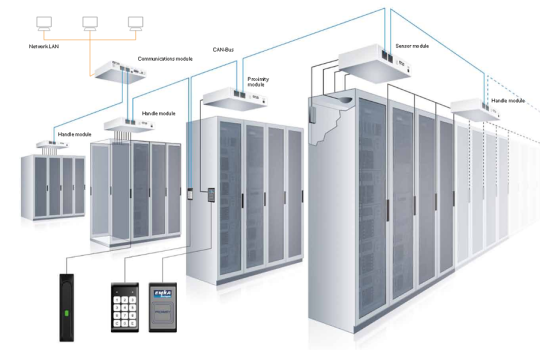
0 notes
Text
Pentair and nVent: Leading Solutions for Water Management and Electrical Systems
Pentair offers a wide range of products and services for water treatment, filtration, and circulation, while nVent specializes in electrical enclosures, thermal management solutions, and electrical connection systems. Together, they provide comprehensive solutions for both residential and commercial applications, ensuring efficient and reliable operation of water management and electrical systems.
0 notes
Text

#kei cable#lappcable#schneider#electrocare#schneider electric#nVent#selec#safeon#apc by schneider#milestone#growth#sucess
0 notes
Text
i might be wrong, but i think i am getting a better approach to physics
it's not the programming "how tf did they do it"
but more like "hell i never tought to observe this niche thing, but now that we get into it more, it is seemingly nonsensical, and yet it's based on the observation of real world"
basically i should not get discouraged, bc it's literally observation of shit explained and not new stuff invented (which i should also not be discouraged by but oh well)
(me to my stupid brain : it's! explanation! of! how! shit works! you don't nvent new ways the universe works!!!!)
1 note
·
View note
Text
GIGABYTE G493-SB0 & G292-Z43 Servers For AI/HPC Tasks

Cooling Innovations in GIGABYTE G493-SB0 and G292-Z43 Servers for Enhance AI & HPC Efficiency
GIGABYTE Enhances Green Computing Performance at DCW Singapore by Showcasing Advanced Cooling Solutions for Data Centers.
At Data Centre World 2024, Giga Computing, a GIGABYTE subsidiary and a pioneer in the fields of generative AI servers and cutting-edge cooling technologies, will be on display to provide cutting-edge data center solutions that can handle workloads and data center sizes of all kinds. This year, Giga Computing is launching many technologies aimed at improving data center efficiency, encouraging sustainability, and maximizing AI supercomputing.
G593-SD1 server
The NVIDIA HGX H200 8-GPU powered G593-SD1 server with Direct Liquid Cooling (DLC), intended for high-performance AI tasks, is the centerpiece of the display. Additionally highlighted are Immersion Cooling Solutions powered by GIGABYTE, which provides a sustainable and energy-efficient solution to contemporary data center cooling, and Rear Door Cooling Solutions in collaboration with nVent, which are designed for high-density HPC/AI applications.
Visitors can experience the full potential of these solutions at booth U20, where they can see the G593-SD1 server with NVIDIA HGX H200 DLC and the 800kW-capable nVent RackChiller CDU800. Data centers may now run at greater power densities without sacrificing dependability or performance With to this combination.
G493-SB0 Server
GIGABYTE’s sophisticated Cooling Solution, in collaboration with nVent, provides a cost-effective substitute for high-performance workloads, such as those in HPC/AI settings, for establishments that are not yet prepared to make the whole switch to liquid cooling. This solution works with air-cooled systems such as the 2U4N H263-S62, a high-density server that needs a 3000W power supply and is powered by twin 5th Gen Intel Xeon Scalable Processors per node. Furthermore, supporting up to eight dual-slot Gen5 GPUs, GIGABYTE’s G493-SB0 server is certified under NVIDIA-Certified Systems – OVX Servers and Data Center Servers, making it perfect for AI training, inference, and visual computing.
G493-SB0
Systems Verified by NVIDIA-OVX Servers
Data center servers-certified by NVIDIA
supports eight Gen 5 dual-slot GPUs.
Two Intel Xeon Scalable Processors, Generations 5 and 4
Intel Xeon Dual Core Max Series
32 DIMMs, 8-Channel DDR5 RDIMM
Architecture with Dual ROM
two 10Gb/s LAN ports through the Intel X710-AT2
Eight 3.5″/2.5″ Gen5 hot-swappable NVMe/SATA bays
4 hot-swappable 3.5″/2.5″ SATA bays
With a PCIe Gen3 x1 interface, one M.2 slot
Eight FHFL PCIe Gen5 x16 GPU slots
3+1 3000W 80 PLUS Titanium backup power sources
Data centers with up to 78 kW high-density racks may achieve high-density cooling without a full infrastructure upgrade by using nVent’s Rear Door Heat Exchanger (RDHx), assuring cost effectiveness and streamlining implementation.It’s Fthantake great pride in providing GIGABYTE with innovative cooling solutions that meet the demands of high-density data centers. According to Marc Caiola, Vice President, Data Solutions – Cooling & Networking at nVent, “The RDHX Pro is designed to maximize efficiency, cooling performance, and serviceability, enabling customers to scale without extensive infrastructure changes.”
G292-Z43 Server
With to the GIGABYTE 4U POC Tank’s G292-Z43, which supports 16 single-slot Gen4 GPUs and requires 2200W to run, demand for GIGABYTE’s single-phase immersion cooling solutions is still rising. With tank sizes ranging from 4U to 25U, GIGABYTE may assist clients in meeting ESG requirements, achieving PUE as low as 1.02, and reducing total cost of ownership (TCO). These systems are designed to meet a range of operating requirements. They provide scalable and adaptable cooling choices for both typical data center expansions and those on a tight budg
G292-Z43
Server with Immersion Cooling
supports sixteen Gen4 single-slot GPUs in total.
Two Processors AMD EPYC 7003/7002 Series
16 DIMMs, 8-Channel DDR4 RDIMM/LRDIMM
two 10Gb/s LAN ports through the Intel X550-AT2
Four 2.5-inch Gen4 hot-swappable NVMe/SATA/SAS bays
Four x 2.5-inch hot-swappable SAS/SATA bays
sixteen FHFL PCIe Gen4 x16 GPU slots
Two LP PCIe Gen4 x16 add-in card slots
Two 2200W 80 PLUS Titanium power source
Read more on Govindhtech.com
#G493SB0#G292Z43#G593SD1server#NVIDIAHGXH200#DDR5#GIGABYTE#news#technews#technology#technologynews#technologytrends#govindhtech
0 notes